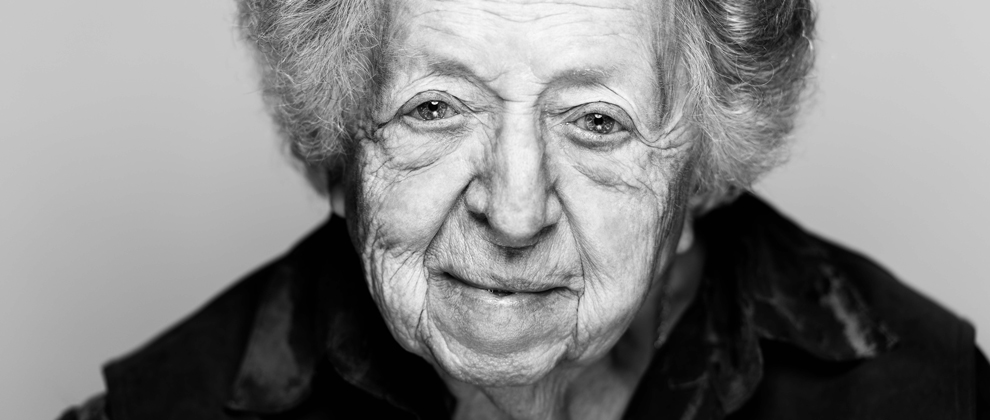by Amelia Mills and Claudia Khoury
The eyes of Phillip Maisel, a 92-year-old Holocaust survivor, emit a quiet dignity and resilience as they stare intently out of their still, black and white world. One can’t help but stare back. Behind these eyes are stories; memories and tragedies most of us can’t even begin to comprehend. Yet here they are, obtained in a single shot with a click of a camera button.
The photo hangs alongside 18 other portraits of survivors at the Elsternwick Jewish Holocaust Centre, as part of Facing the Past, an exhibition created by 20-year-old Melbourne photographer Simon Shiff. The exhibition marks the organisation’s 30th anniversary. As well as being part of a greater, worldwide commemoration of the 70th anniversary of the end of the Holocaust.
It pays homage to the Holocaust survivors who volunteer their time at the centre, educating visitors about a subject often seen as taboo. Now, these survivors have become the subjects. Their stories and memories, rather than being shared verbally, resound in their still life, black and white selves.
For Shiff, the eyes were the obvious focal point for each portrait, with each subject staring squarely down the long lens of his Nikon D800. He chose a long lens specifically to enhance the focus on the eyes, using lights and reflective boards to achieve intensity and detail.
“Light is really important when you’re shooting the eyes, because if it’s not done correctly you can’t really get the brightness”, he says. “The eyes for me were the key thing, I wanted them to be really sharp and piercing.”
Shiff’s detail allows him to share the true essence of the subject with his audience.
What Photoshop would usually smooth and conceal, Shiff has chosen to enhance: tiny wisps of hair glimmering on a cheek, straw-like eyebrow hairs and a dark blemish on the jaw line are all pulled into focus.
Folds of skin textured like crumpled paper shape themselves around smile lines and pinched crows-feet at the outer edges of the eyes.
The concept of “doing less” to a photograph was a novelty for Shiff who usually digitally edits most of his shots to enhance or perfect an image.
“It was interesting to do less, because often portraits require a lot more work on the computer,” says Shiff. “There’s the expectation of not seeing flaws, so to let them show was very different.”
“You can’t escape in these kinds of photos. If you have a wrinkle, a crease or a mark on the skin it’ll be noticeable. But for me that was the point, I wanted the portraits to look exactly like the subjects.”
For Shiff, black and white photography –which he claims stems from his interest in photojournalism– was an obvious choice for the exhibition. He says it “felt commemorative and classic”, lending an “analogue-like” feel to the pieces.
“Black and white photography also takes away a lot of distractions,” says Shiff. “When using black and white, the colour of skin, clothing or hair becomes neutralised and then it can all become just highlights and shadows.
I did a lot of work on the highlights and shadows to make them really stand out and bring out the detail.”
This attention to the little things allows Shiff to breathe life into his subjects’ existence and focus on their present state of being.
“My portraits look at who the survivors are now and have a bit more of a positive view to them, rather than emphasising the sadness and tragedy of the event,” he says.
“A lot of exhibitions about the survivors are often quite somber and everyone’s very serious, but these people have come through a lot and are still living their lives.
“It’s amazing.”
While some subjects offer the camera looks of uncertainty and doubt, others stretch to a cheeky grin. But each photograph looks beyond these people as just ‘victims’: they capture the very essence of each subject, reminding us these people aren’t simply relics of a time gone.
by Amelia Mills (@MillsA17) & Claudia Kouhry

